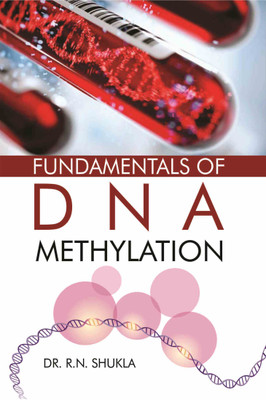Fundamentals of DNA Methylation(English, Hardcover, Shukla R.N)
Quick Overview
Product Price Comparison
DNA usually exists as a double-stranded structure, with both strands coiled together to form the characteristic double-helix. Each single strand of DNA is a chain of four types of nucleotides having the bases: adenine, cytosine, guanine, and thymine. A nucleotide is a mono-, di-, or triphosphate deoxyribonucleoside; that is, a deoxyribose sugar is attached to one, two, or three phosphates. Chemical interaction of these nucleotides forms phosphodiester linkages, creating the phosphate-deoxyribose backbone of the DNA double helix with the bases pointing inward. Nucleotides are matched between strands through hydrogen bonds to formbase pairs. Adenine pairs with thymine, and cytosine pairs with guanine. DNA polymerases adds nucleotides to the 5' end of a strand of DNA. If a mismatch is accidentally incorporated, the polymerase is inhibited from further extension. Proofreading removes the mismatched nucleotide and extension continues. DNA polymerases are a family of enzymes that carry out all forms of DNA replication. However, a DNA polymerase can only extend an existing DNA strand paired with a template strand; it cannot begin the synthesis of a new strand. To begin synthesis, a short fragment of DNA or RNA, called a primer, must be created and paired with the template DNA strand. The book will convey the excitement of the continuing process of discoveries and the strategies developing in genetic engineering.


